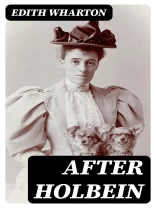In ‘After Holbein, ‘ Edith Wharton embarks on an intricate exploration of art, identity, and the fragility of human relationships, set against the backdrop of the early 20th-century American elite. The novella presents a richly detailed narrative, weaving together psychological depth with keen social observation, as characters grapple with their obsessions and aspirations. Wharton’s distinctive prose is imbued with a subtle tension, reflecting her acute awareness of societal constraints and the perennial quest for authenticity amidst the superficialities of high society. The title itself alludes to Hans Holbein the Younger, whose portraiture serves as a symbolic thread linking the characters’ experiences to themes of legacy and the passage of time. Edith Wharton, the first woman to win the Pulitzer Prize for Fiction, was deeply influenced by her own experiences within the upper echelons of American society, highlighting both its allure and its moral complexities. Her extensive travels and literary pursuits informed her nuanced perspectives on culture and class, as evidenced in her later works. ‘After Holbein’ is a testament to her mastery in crafting moments of introspection that reveal profound universal truths. This novella is highly recommended for readers seeking to understand the interplay between art and life, as well as those intrigued by Wharton’s psychological insight and social critique. ‘After Holbein’ invites readers to reflect on the choices that define us and the legacies we leave behind, making it an essential addition to any serious literary collection.
A propos de l’auteur
Edith Wharton (1862-1937), born Edith Newbold Jones, was a distinguished American novelist, short story writer, and designer. Hailing from a privileged New York family, Wharton’s literary work often explored the complexities and contradictions of American high society, a milieu she knew intimately. Wharton made her literary debut with ‘The Decoration of Houses’ in 1897, solidifying her interest in architecture and interior design. Her breakthrough, however, came with the novel ‘The House of Mirth’ (1905), which received widespread critical acclaim for its incisive portrayal of New York’s elite and the pressures facing women within this social stratum. Wharton’s narrative style is characterized by its elegance, sharp character studies, and keen social observations, trademarks that are also exemplified in one of her late works, the story ‘After Holbein’ (1939). A Pulitzer Prize winner for ‘The Age of Innocence’ in 1921, Wharton was also the first woman to receive an honorary doctorate from Yale University. Beyond her fiction, Wharton wrote at least 85 essays on a wide range of topics, including travel and cultural critique. Her literary legacy is defined by her eloquent yet critical lens on the society that both shaped and was dissected by her writing.












